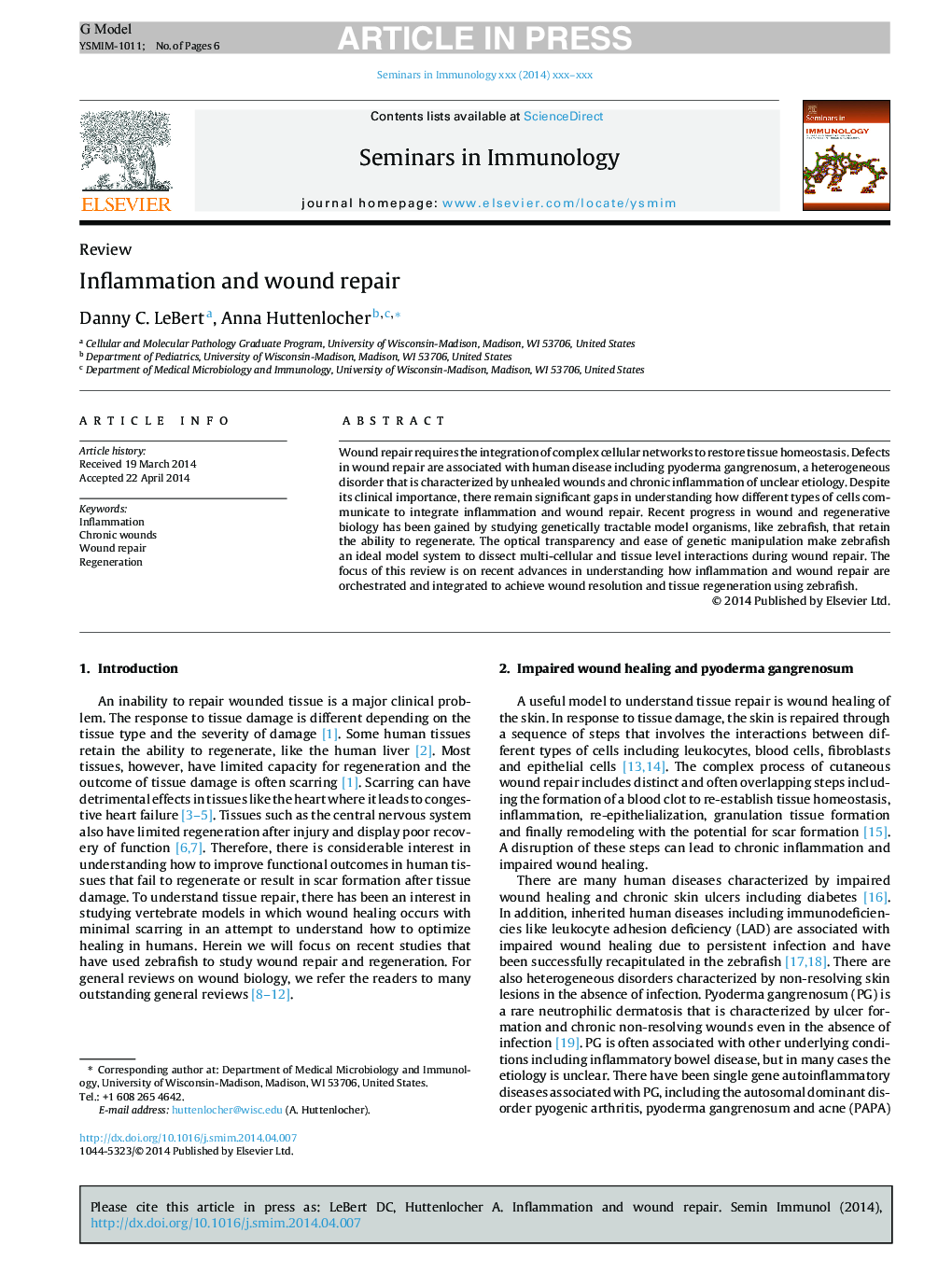| Article ID | Journal | Published Year | Pages | File Type |
|---|---|---|---|---|
| 6125856 | Seminars in Immunology | 2014 | 6 Pages |
Abstract
Wound repair requires the integration of complex cellular networks to restore tissue homeostasis. Defects in wound repair are associated with human disease including pyoderma gangrenosum, a heterogeneous disorder that is characterized by unhealed wounds and chronic inflammation of unclear etiology. Despite its clinical importance, there remain significant gaps in understanding how different types of cells communicate to integrate inflammation and wound repair. Recent progress in wound and regenerative biology has been gained by studying genetically tractable model organisms, like zebrafish, that retain the ability to regenerate. The optical transparency and ease of genetic manipulation make zebrafish an ideal model system to dissect multi-cellular and tissue level interactions during wound repair. The focus of this review is on recent advances in understanding how inflammation and wound repair are orchestrated and integrated to achieve wound resolution and tissue regeneration using zebrafish.
Related Topics
Life Sciences
Immunology and Microbiology
Immunology
Authors
Danny C. LeBert, Anna Huttenlocher,
